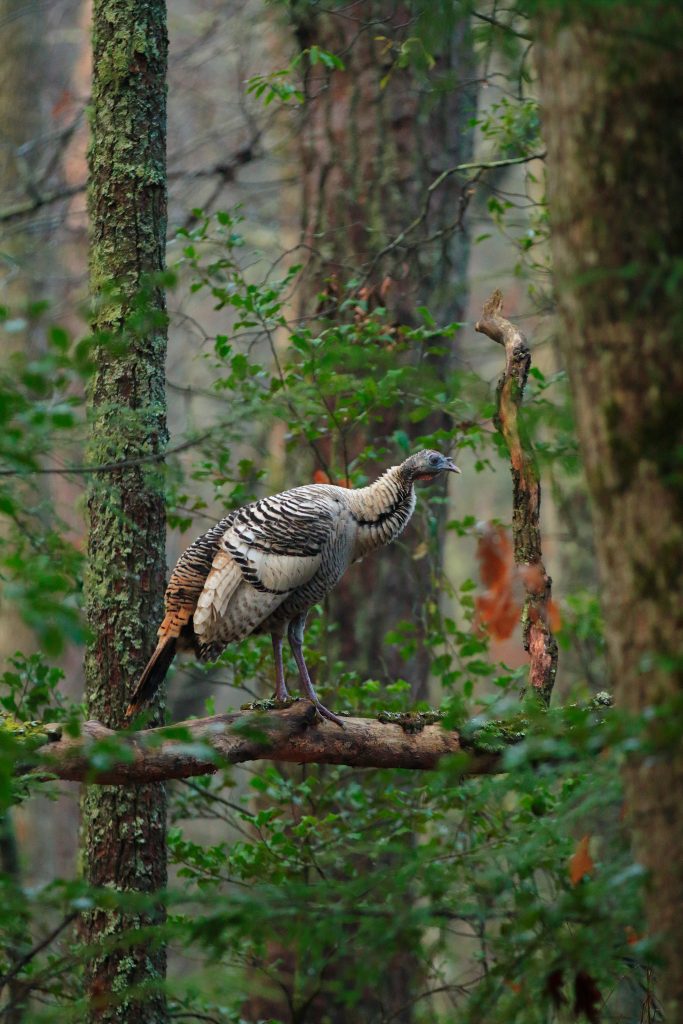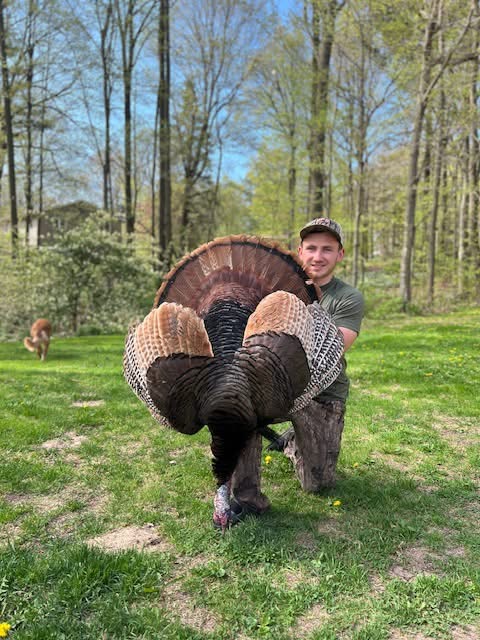Finding Answers and Mysteries
First-year findings have shed new light on plumage variations but also revealed deeper questions.

A collaborative research initiative exploring wild turkey genetics is beginning to find a better understanding of the birds’ genetic makeup — and uncovering more questions along the way.
WildturkeyDNA — which is spearheaded by the Wild Turkey Lab, the National Wild Turkey Federation, Ducks Unlimited, the University of Texas El Paso and the Low Country Game Bird Foundation — recently completed its first year of sample collecting, testing and analysis. The project seeks assistance from hunters to study wild turkey genetics on a broad scale, hoping to gain a better understanding of population genetics across the species’ range, and uncover scientific data that can inform hunters, wildlife managers, and state and federal agencies.
Initially, the collaborative project is seeking to improve the overall understanding of the origins of color variations in turkey feathers and the potential for color phases in wild turkey populations. As part of the study, hunters send turkey tissue samples — a portion of the tongue — via a kit for genetic analysis to the Lavretsky Lab at UTEP. When ancestry testing has been completed, results are provided to the hunter and published. In 2025, wildturkeyDNA received about 90 sample collection kits from hunters. The group recently began posting results on its social media outlets, and initial findings painted a clear picture about feather color variations.
“Many of the birds with odd plumage are not entirely wild turkeys,” said Michael Chamberlain, NWTF distinguished professor and founder of the Wild Turkey Lab. “Yes, they’re turkeys living in the wild, but they’re not exactly wild turkeys. Quite a bit of the odd plumage that we’re seeing is going to be traced in some way to the presence of non-wild genetics.”
Heritage turkeys were created by crossbreeding wild and domestic turkeys and have been developed through time to display specific color patterns. Unlike commercially bred turkeys, heritage birds mate naturally and have lifespans similar to those of wild turkeys. It’s not known exactly how heritage turkeys mix with flocks of wild turkeys, but it’s likely that some escape or are released from farms.
“How they get out there we can only speculate,” Chamberlain said. “From what I’m told, some of these birds escape and some are released. They integrate into wild flocks. They become feral. And in some cases, they are breeding with wild birds. And the result is a bird that is a feral turkey living in the wild, but it’s not a pure wild turkey. That’s an important distinction.”
Chamberlain said the nature of heritage turkeys — more than 10 classified varieties have been identified — further complicates the search for a clear genetic picture.
“They’re all genetically similar to one another,” he said. “If you put all the different heritage birds on a graph, genetically they kind of cluster all together. Whereas in wild turkeys, if you plot the subspecies, they cluster differently. You can clearly see there are the Easterns, there are the Gould’s, there are the Rios. The heritage birds all kind of group together. But as they interbreed with wild birds, the picture gets muddier and muddier. Now you have back-crosses.”

“Because genetic traits in turkeys can lie dormant through several generations and then be expressed in a particular bird, and subspecies of wild turkeys differ genetically to some degree, combined with the presence of genetics from heritage turkeys, it creates complexity that we’re just starting to unravel,” wildturkeyDNA wrote in an Aug. 7 social media post.
First-year analysis has also revealed the incredible depth and convoluted nature of wild turkey genetics across the bird’s broad range.
“Several factors are going on in turkey populations that create a lot of genetic complexity,” Chamberlain said. “For example, subspecies that are different genetically to some degree. You have a lot of genetic structure going on. Turkeys in Alabama are different genetically than turkeys in New York, but they’re the same subspecies. From one spot on the planet to another spot, there are already genetic differences we can pick up.”
The group has also learned that sorting through the mysteries of wild turkey DNA differs from what scientists are learning about waterfowl genetics. WildturkeyDNA was inspired by the success of DU’s duckDNA project.
“It is much more complex than ducks,” Chamberlain said. “Ducks have discreet species, so you can tell a mallard from a green-winged teal easily. But when you start going into one species and you have multiple subspecies, and you have the inherent complexity plus the presence of these heritage-variety birds on the landscape, it creates a recipe for a complex scenario, and that’s what we’re seeing.”
In the future, wildturkeyDNA will expand its testing to evaluate additional concerns, such as genetic diversity, hybridization and detailed metrics of population genetics across the wild turkey’s range. Chamberlain said the group will hold a seminar at the 2026 NWTF Convention, at which hunters can sign up to be considered for participation. Ideally, the effort will ultimately capture samples from birds in all 49 states with wild turkey populations.
“Be patient,” Chamberlain said. “We’re learning a lot here. Every little fold we flip over, we discover something else of interest. There’s a lot to unpack.”